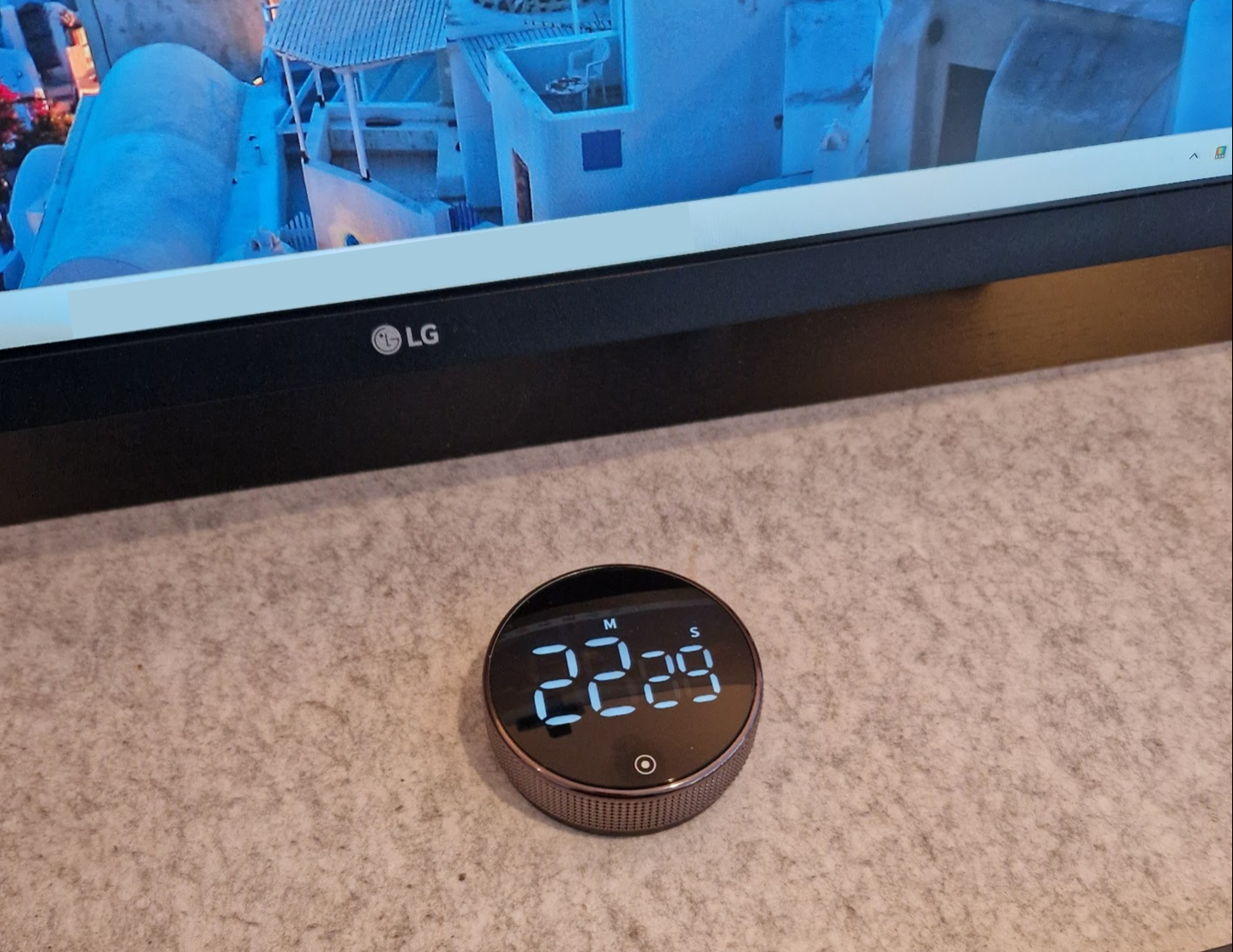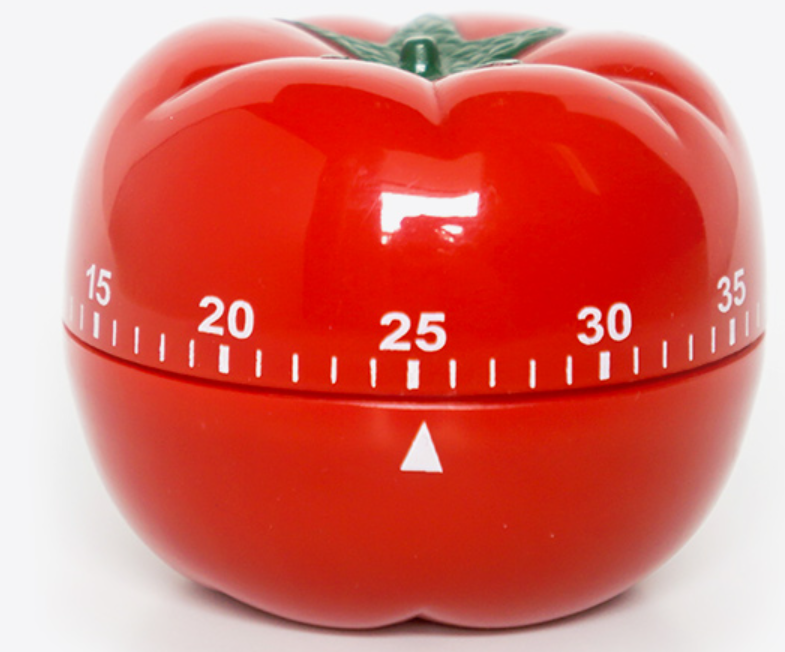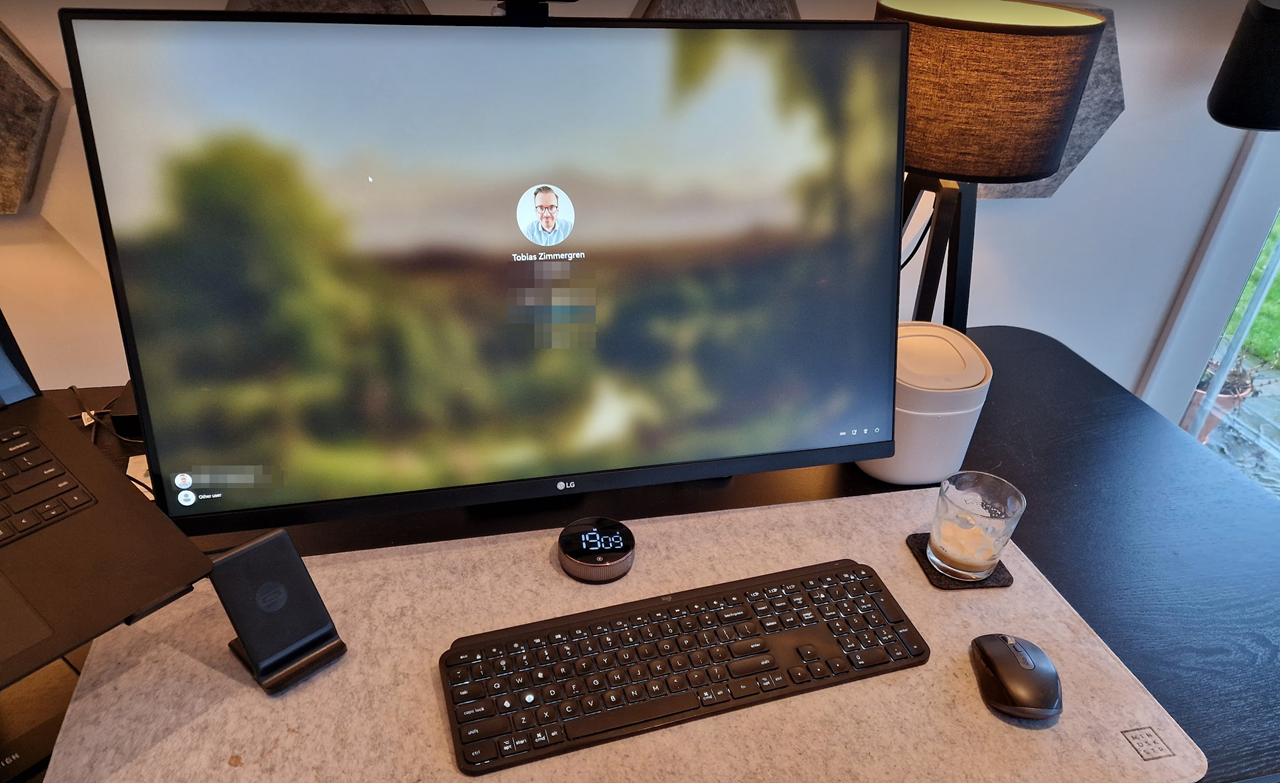
Staying productive with the Pomodoro Technique
Table of Contents
You've probably heard me emphasize 'Be productive, not busy' countless times – much like the quote in the header photo of this very blog post, which is hanging in my home office.
The distinction between merely doing things and doing the right things efficiently is significant. Being busy all day doesn't necessarily yield tangible results, whereas proper focus can lead to more achievements in less time.
Recently, I've had several discussions with individuals curious about staying focused amidst an overwhelming workload, multiple workstreams, and wearing many hats / shouldering many roles. In such scenarios, maintaining a healthy mind is key. Additionally, cultivating habits that promote a balanced work and life routine is essential.
Before you delve further into this article, you might also find interest in this related piece:

What is the Pomodoro Technique?
I've often relied on The Pomodoro Technique, a time management method from the 1980s, to increase my productivity.
The basic idea is to break down work into intervals, typically about 25 minutes each, followed by short breaks. During these intervals, you focus solely on the goals you've set for that period, executing them preferably without distractions.
The workflow looks essentially like this:
- Decide what to focus on.
- Disable all notifications / enable flight mode / actively ignore distractions.
- Set a timer (the pomodoro) – 25 minutes.
- Take a break – 5 minutes.
Repeat for as many times you feel is necessary to get a valuable outcome from your work. If you've got a clear picture of the work you need to get done, this is an amazing method to do less with more.
Fun trivia: Each interval is known as a 'Pomodoro,' derived from the Italian word for tomato. This name originated from the tomato-shaped kitchen timer initially used for the technique. I use a slightly more modern, yet still physical, kitchen timer.


I use a physical kitchen timer (on the left), whereas the original kitchen timer used by the inventor of the technique was a red tomato (on the right).
Why do I use the Pomodoro Technique?
To each their own. For me, it's about setting aside focus-time and executing on the right things without distractions, and I find this technique to be extremely valuable for that very purpose.
Does it solve all my problems? No. Does it give me super-powers? No.
But it does help me focus, which in turn leads to tangible outcomes time and time again.
Efficiency and effectiveness
The core principle of the Pomodoro Technique is to cultivate a high level of focus for short, intense periods, which significantly enhances efficiency.
While there's a ticking clock, I don't get a sense of urgency, but it does give me a scope of my current heightened focus, where I evidently get more things done in less time. Additionally, the quality derived from the time spent often increases because I stay focused.
Do more with less
By enforcing regular breaks, the Pomodoro Technique ensures that you get to recharge regularly. It's not just about the focus-mode. It's equally important to focus on taking breaks. This approach is grounded in the understanding that the brain's attention and energy are finite resources.
Remember, being busy is not the same as being productive.
For me, staying productive at all times comes back to a healthy, relaxed, and recharged mind. With these 'forced' breaks, I can ensure I get the recovery I need to stay focused the rest of the day.
Stay productive, not busy
The Pomodoro Technique fits well with the principle of focusing on productivity instead of just being busy.
I mentioned this before, but I think it's an important point to reiterate. Don't just be busy – make sure you're also productive. I see this time and time again, where people work too many hours, days, weekends, and still feel they didn't achieve what they needed.
I use this technique to be fully engaged in the task at hand and minimize distractions and the temptation to multitask, which often leads to a busy but unproductive work style.
How do I use the technique?
It's not rocket science. Using the pomodoro technique is very straight forward, but will require some discipline. Here's how I use it for some of my work.
How you apply this in your life may look different.
Get a physical timer
I try to keep a tidy desk at all times. Clean desk, peace of mind. If you're keen on exploring my monitor setup, which features my clean desk, here it is:

In addition to the fairly clean desk, I also now have a physical timer. I don't use a digital timer on the computer anymore. I tried that, but it was too much of a distraction.
Using the physical timer, sitting at my desk, gives me less context switching and an increased focus. I don't need to fiddle with or look at any apps or digital timers on my monitor.

Regular tasks
This technique works well for when you've got a chunk of work you need to do asynchronously. For example:
- Reviewing your security posture.
- Validating your privacy and compliance controls.
- Analyzing, summarizing, and sending reports.
- Grooming your backlogs.
- And more...
Strategic tasks
The technique also works well for me when I work on long-term strategic plans and visions. For example:
- Focused no-distraction ideation sessions to unlock new creativity.
- Formalize business plans or proposals.
- Use as a vehicle for momentum when formalizing business strategies, plans, and proposals.
- And more...
Research tasks
One more example I can think of where this technique fits well is when doing research. For example:
- Researching and learning about a specific topic, area, or technology.
- Analyzing big amounts of data to derive outcomes, values, or signals.
- And more...
Summary
You can't fix all problems with this technique, but it's extremely effective when you can scope your work.
Just getting started might seem like a challenge due to the amount of work you're facing. However, using this approach, starting is not only a lot easier, it's also a lot easier to stay on track!
Try it out and let me know what you think!







Recent comments